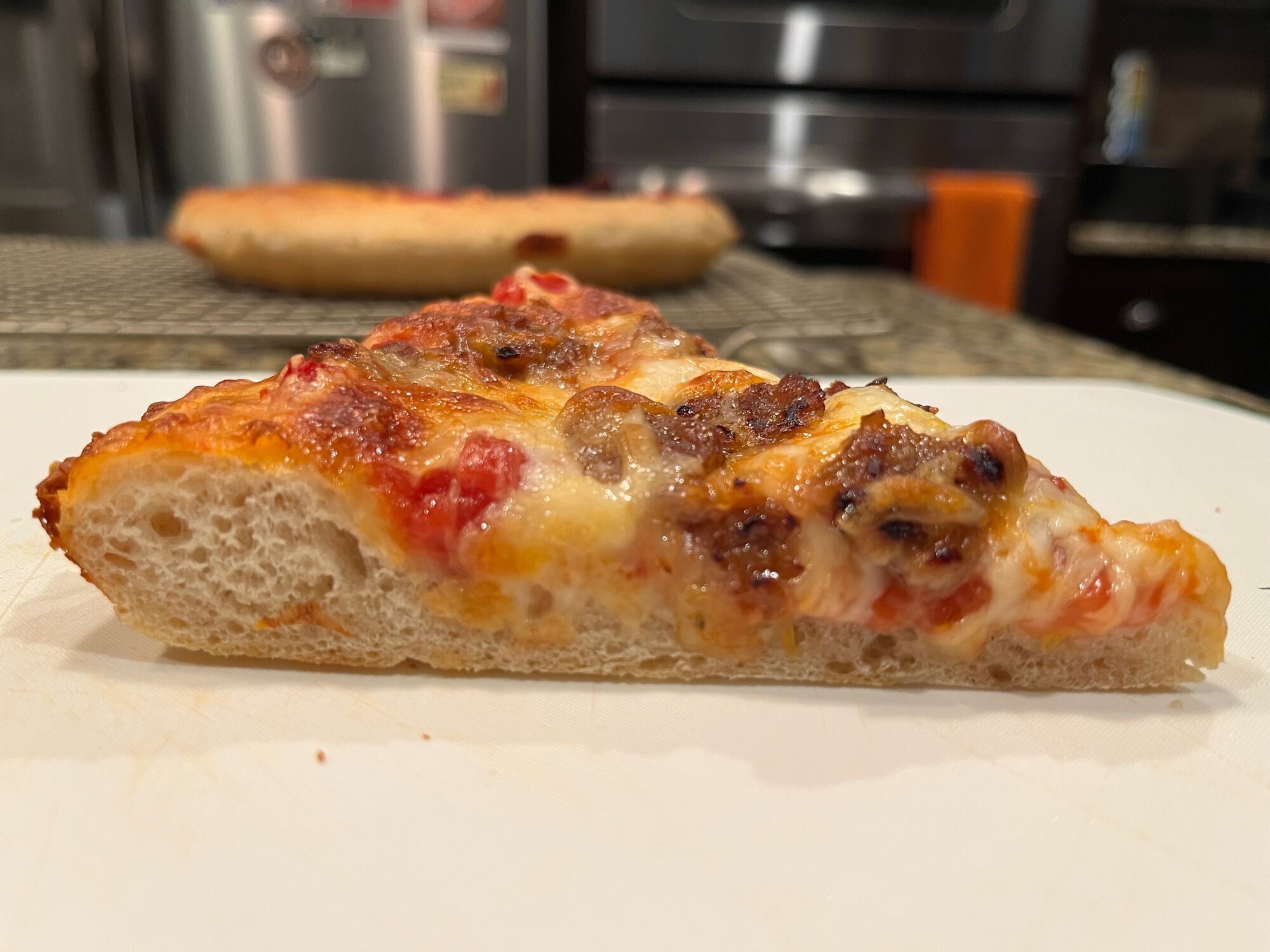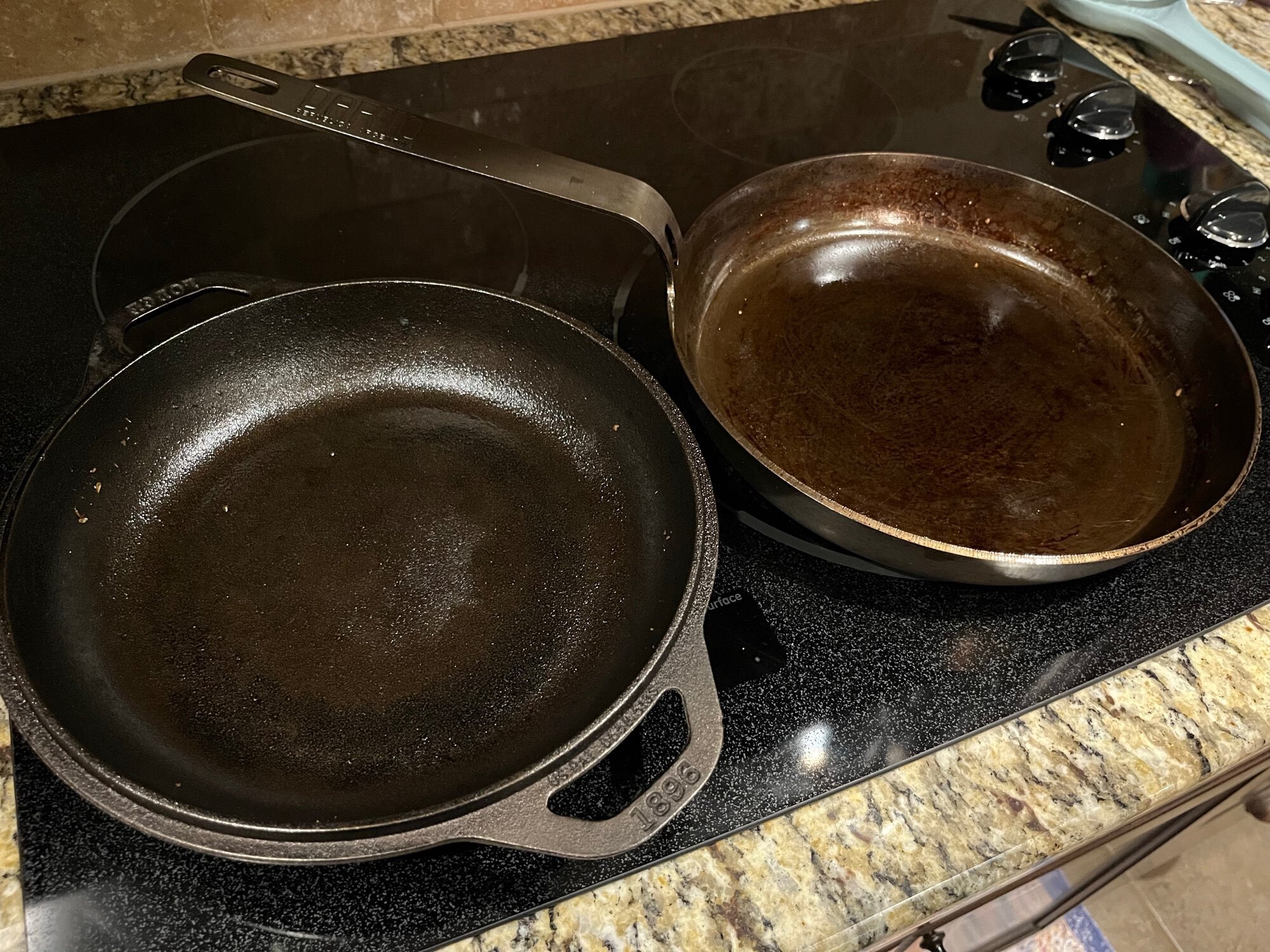Homemade pizza dough and sauce in my Lodge double Dutch oven lid and Darto carbon steel pan. The dough was cold fermented in the fridge then proofed in buttered pans. I cooked the dough on the stove top briefly to help it firm up before adding sauce and toppings.
For a crispier bottom, an alternative is to preheat the pans then add oil and (carefully) spread the proofed dough into the pan before adding toppings and cooking.






I’ve done both and I prefer the cold dough method. Shaping it hot is quite hard with a lot of toppings, proofing it in the cast iron also keeps it fluffy. Now there’s a huge difference in how you bake it. For “cold” cast iron you need bottom heat, lots of it. So for me what works is maximum bottom heat, low grate for about 5-10 minutes. I have a gas oven, so there’s no shortage of bottom heat. After that I turn the heat down a bit and bake the rest of the pizza while not burning the bottom. Unfortunately I don’t have a fan or a top heating element,but if you do then that’s a great time to move the pizza up a bit and use full surround heat. The other big factor is the shape of your cast iron, a deep ridged skillet bakes differently from a flat griddle. Lastly it’s important to have your cast iron at room temperature.
For really crispy pizza I use a flat surface (stone or iron) and then slide the entire pizza on at once using a big paddle. This takes practice, sometimes the toppings want to move but the bottom wants to stay. The trick I learned there is to slide it off slowly.
I don’t find the shaping hard at all. I stretch it to the right size on my cutting board, then fold it to a carry-able size and drop it into the hot skillet, unfold it, and put the toppings on.